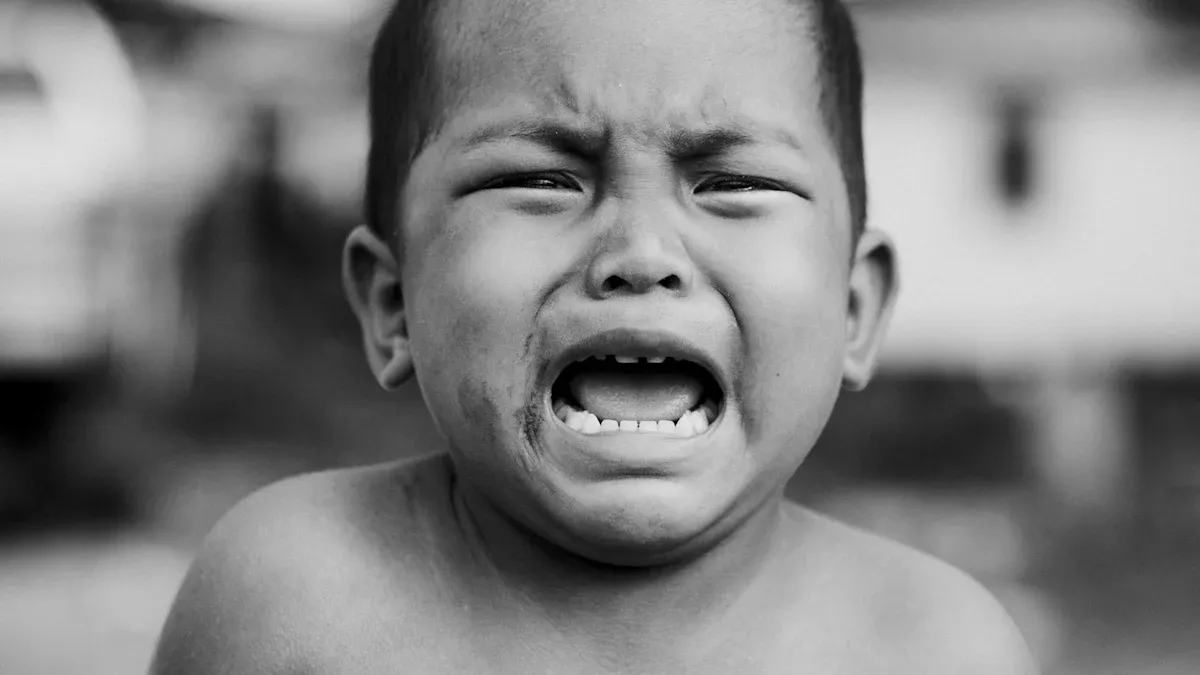Circumcision in the Philippines: What parents need to know
Dr. Jayson Castro is a board-certified pediatric surgeon based in Cavite, Luzon.

Circumcision, known locally as "tuli," holds a special place in Filipino culture. For many boys, it represents a significant step toward adulthood. This practice is deeply rooted in tradition and reflects the influence of Christian values on Filipino identity. Families often view it as a rite of passage, linking it to masculinity and social belonging.
In the Philippines, circumcision is incredibly common, with a prevalence rate of 92.5%. This is much higher than the global average, where many countries report rates below 20%. The procedure is not just a medical act but also a cultural ritual supported by community and family expectations. For Filipino boys, undergoing circumcision often brings a sense of pride and acceptance within their social circles.
Key Takeaways
Circumcision, called 'tuli,' is an important tradition for Filipino boys.
It shows their change from being boys to becoming young men.
More than 90% of boys in the Philippines get circumcised.
This is because of strong cultural beliefs and social pressures.
Circumcision helps with health by improving cleanliness and lowering infection risks.
Good preparation and care after are needed for quick healing.
This includes handling pain and stopping infections from happening.
Families can choose between old traditions or modern medical methods.
These services are often free or cost very little.
Overview of Circumcision in Filipino Culture

Cultural Importance
Rite of passage for boys
Circumcision has long been a significant rite of passage in Filipino tradition. For many boys, it symbolizes the transition from childhood to manhood. This cultural practice often takes place during pre-adolescence or adolescence, with Holy Saturday being a popular day for the ritual. In rural areas, the event is deeply communal. Boys gather to undergo the procedure together, following traditional practices like bathing in rivers and chewing bayabas (guava) leaves to aid healing. These rituals highlight the strong connection between circumcision and Filipino identity.
Social pressures and expectations
In Filipino society, circumcision is more than a personal choice; it is a social expectation. Boys often feel pressure to undergo the procedure to avoid teasing or exclusion from their peers. Being circumcised is seen as a mark of masculinity and maturity. Families also play a role in encouraging this practice, viewing it as a necessary step in a boy's development. The cultural weight of circumcision ensures that it remains a widely accepted and practiced tradition.
Medical Context
Prevalence of circumcision in the Philippines
Male circumcision is highly prevalent in the Philippines, with over 90% of boys undergoing the procedure. This rate is significantly higher than in many other countries, where circumcision is less common. The widespread acceptance of this practice reflects its deep cultural and medical roots in Filipino society.
Common reasons for the procedure
Filipino families often choose circumcision for both cultural and health reasons. Improved hygiene is one of the primary medical benefits, as it reduces the risk of infections. Additionally, the procedure aligns with societal norms, helping boys feel a sense of belonging and acceptance. While circumcision is sometimes performed on newborns in other cultures, it is typically reserved for older boys in the Philippines, emphasizing its role as a rite of passage.
Benefits of Circumcision for Boys
Health Advantages
Improved hygiene
Circumcision offers significant health benefits, particularly in maintaining proper hygiene. By removing the foreskin, the procedure makes it easier to clean the penis, reducing the buildup of bacteria and other harmful substances. This can prevent conditions like balanitis, an inflammation of the penis head caused by infections or irritation.
Circumcision lowers the risk of urinary tract infections (UTIs), which are more common in individuals with an intact foreskin.
It prevents phimosis, a condition where the foreskin cannot retract, leading to discomfort and potential infections.
The procedure also reduces the likelihood of balanoposthitis, an inflammation affecting both the foreskin and the penis head.
These benefits highlight how circumcision contributes to better hygiene and overall health for boys.
Description | |
|---|---|
Urinary Tract Infections | Less risk of urinary tract infections. |
Sexually Transmitted Diseases | A lower risk of some sexually transmitted diseases. |
Cancer Protection | Protection against cancer of the penis and a lower risk of cervical cancer in sex partners. |
Inflammation Prevention | Prevention of balanitis and balanoposthitis. |
Phimosis and Paraphimosis | Prevention of phimosis and paraphimosis. |
Hygiene | Easier to keep the end of the penis clean. |
Reduced risk of infections
Circumcision significantly reduces the risk of infections. Without the foreskin, bacteria and viruses have fewer places to thrive. This lowers the chances of contracting sexually transmitted diseases (STDs) and other infections. Additionally, circumcision protects against conditions like phimosis and paraphimosis, which can cause pain and swelling. By undergoing this procedure, boys can enjoy better health and fewer complications related to infections.
Social and Psychological Benefits
Acceptance in Filipino society
In Filipino culture, circumcision is more than a medical procedure. It is a social norm that fosters acceptance and belonging. Boys who undergo circumcision often feel a sense of pride and inclusion within their communities. This cultural practice helps them meet societal expectations, reinforcing their identity as young men.
Confidence and belonging
Circumcision can boost a boy's confidence. In the Philippines, being circumcised is seen as a mark of maturity and masculinity. Boys who undergo the procedure often feel more secure in their social interactions. They avoid the stigma or teasing that may come with not being circumcised. This sense of belonging contributes to their emotional well-being and self-esteem.
Preparing for Circumcision
Choosing the Right Time
Typical ages for circumcision
In the Philippines, circumcision is typically performed on boys between the ages of 11 and 13. This age range aligns with the cultural view of circumcision as a rite of passage. Many Filipino families choose this period because it marks the transition from childhood to adolescence. In rural areas, the procedure often takes place during Holy Week, adding a spiritual dimension to the event.
Factors influencing timing
Several factors influence the timing of circumcision. Cultural traditions play a significant role, especially in communities where the procedure is tied to religious or social events. Parents may also consider the child's readiness, both physically and emotionally. Some families prefer to wait until school vacations to allow for proper recovery without disrupting the child's education.
Preparing the Child
Explaining what to expect during circumcision
Preparing your child mentally and emotionally is crucial. Start by explaining what to expect during circumcision in simple terms that match their age and understanding. Describe the procedure as a step toward better hygiene and health. Reassure them that it is a common practice among Filipino boys and that they will receive care to minimize pain.
Addressing fears and concerns
Children may feel anxious about the procedure. Listen to their fears and provide emotional support. Visiting the clinic or hospital beforehand can help them feel more comfortable with the environment. If your child shows intense fear, consider seeking advice from a child psychologist to ease their concerns.
Practical Preparations
Supplies needed for aftercare
Proper aftercare ensures a smooth recovery. Prepare essentials like sterile gauze, antiseptic ointments, and pain relievers. Comfortable clothing, such as loose-fitting shorts, can help reduce irritation. Having these items ready before the procedure will make the healing process more manageable.
Consulting a medical professional
Consulting a healthcare provider is an essential step. Schedule the procedure at a time when your child is healthy. Discuss the surgical process, including anesthesia and post-operative care. Follow any preoperative instructions, such as bathing or fasting, to reduce the risk of complications. A well-prepared parent can help ensure a safe and successful circumcision experience.
Techniques Used in Circumcision
Traditional Methods
Role of the manunuli
In rural areas of the Philippines, traditional circumcision, or "pagtutuli," remains a significant cultural practice. This method is often performed by a skilled layperson known as the "manunuli" or an "albularyo." These individuals are respected in their communities for their expertise in this procedure. The process typically takes place near rivers, where boys prepare by bathing and chewing guava leaves. The manunuli uses a sharp tool, such as a "labaja" or "balisong," to make the incision. A wooden device called a "lukaw" helps guide the cut, ensuring precision. Afterward, natural remedies like guava leaves are applied to reduce bleeding and promote healing.
Cultural significance of traditional practices
Traditional circumcision holds deep cultural meaning in the Philippines. It is not just a medical procedure but also a communal event that strengthens bonds among boys and their families. The practice often occurs during Holy Week, adding a spiritual element to the experience. For many, it symbolizes the transition to manhood and reinforces their identity within Filipino society. Despite the availability of modern techniques, traditional methods remain popular in some areas due to their cultural importance.
Modern Medical Techniques
Surgical procedures in clinics or hospitals
Modern circumcision methods in the Philippines are performed in clinics or hospitals by trained medical professionals. These procedures use advanced tools and techniques to ensure safety and effectiveness. Common methods include the Gomco clamp, Mogen clamp, and Plastibell device. Each technique involves separating the foreskin from the glans, clamping it, and then making the incision. The use of anesthesia minimizes pain during the surgery, and sterile environments reduce the risk of infection. These methods provide a reliable option for families seeking a more controlled and hygienic approach.
Technique | Description |
|---|---|
Gomco clamp | A probe separates the glans and foreskin, a bell-shaped device is fitted, and the foreskin is cut. |
Mogen clamp | A probe separates the glans and foreskin, the foreskin is clamped and then cut. |
Plastibell device | A plastic ring is placed under the foreskin, tied with a suture, and cut, leaving the ring to fall off later. |
Comparing traditional and modern methods
Traditional and modern circumcision methods differ in safety, effectiveness, and cultural relevance. Traditional methods, while culturally significant, carry a higher risk of complications due to the lack of sterile environments. Modern techniques, on the other hand, offer lower complication rates and shorter recovery times. For example, sleeve circumcision has a complication rate of 1.7%, while newer devices like the NeoAlis clamp may have higher bleeding risks. Families must weigh these factors when choosing between different techniques for circumcision.
Method Type | Complication Rate | Operation Time | Notes |
|---|---|---|---|
Sleeve Circumcision | 1.7% | Shorter | Established traditional method with good outcomes and flexibility. |
NeoAlis Clamp | Higher bleeding | Longer | Modern disposable device, rapid but may have higher early complications. |
What to Expect During Circumcision and Recovery

Immediate Aftercare
Managing pain and discomfort
After circumcision, boys may experience mild to moderate pain. You can help manage this by giving over-the-counter pain relievers, such as acetaminophen or ibuprofen, as recommended by your doctor. Encourage your child to wear loose-fitting clothing to avoid irritation. Applying a cold compress near the area can also reduce swelling and discomfort.
Tip: Keep your child distracted with activities like reading or watching movies to take their mind off the pain.
Preventing infection
Proper care for the incision is crucial to prevent infection. Clean the area gently with warm water and mild soap. Avoid using alcohol-based solutions, as they can irritate the skin. Apply antiseptic ointments as directed by your healthcare provider. Change the dressing regularly to keep the wound clean and dry.
Note: Watch for signs of infection, such as redness, swelling, or unusual discharge. Contact a doctor immediately if these symptoms appear.
Long-Term Healing
Monitoring progress
Circumcision recovery typically takes about one to two weeks. During this time, monitor the healing process closely. Look for signs of proper healing, such as reduced swelling and the formation of a scab over the incision. Ensure your child avoids strenuous activities that could disrupt the healing process.
When to seek medical advice
If you notice excessive bleeding, severe pain, or signs of infection, consult a healthcare professional immediately. Delayed healing or unusual symptoms may require medical attention. Early intervention ensures your child’s recovery stays on track.
Tips for Parents
Supporting the child during recovery
Your support plays a vital role in your child’s recovery. Reassure them that the discomfort is temporary and part of the healing process. Offer emotional support by listening to their concerns and providing comfort.
Encouraging proper hygiene
Teach your child the importance of hygiene during this period. Show them how to clean the area gently and remind them to wash their hands before touching the incision. Proper hygiene reduces the risk of complications and promotes faster healing.
Reminder: Consistent care and attention will help your child recover smoothly and confidently.
Cost and Accessibility of Circumcision
Cost Considerations
Factors affecting the cost
The cost of circumcision in the Philippines varies widely depending on the method and location. In rural areas, traditional circumcision often costs very little. Families may pay a token amount, such as 200–300 pesos, or even offer a pack of cigarettes as compensation. Municipal clinics have started offering free circumcision services, making the procedure accessible to more families. However, clinical approaches in private hospitals or specialized clinics can incur higher expenses due to the use of modern techniques and sterile environments.
Tip: If you’re considering circumcision for your child, explore local options to find a service that fits your budget.
Comparing traditional and medical procedures
Traditional methods of circumcision are generally more affordable than medical procedures. They often involve minimal costs and are performed by community healers during cultural events like Holy Week. On the other hand, medical procedures in clinics or hospitals provide a safer and more hygienic environment but come with higher fees. Families must weigh the cultural significance of traditional methods against the safety and precision of modern medical techniques when deciding which option to choose.
Accessing Services
Clinics, hospitals, and community programs
In the Philippines, several service providers offer circumcision. Municipal clinics frequently provide free services, often supported by organizations like Rotary Clubs. Traditional healers perform circumcision during cultural rituals, especially in rural areas. For families seeking modern medical techniques, private clinics and hospitals offer professional services.
Service Provider | Type of Service | Additional Notes |
|---|---|---|
Municipal Clinics | Free circumcision services | Supported by Rotary Clubs |
Traditional Healers | Traditional circumcision | Often performed during Holy Week rituals |
Free or low-cost options
Municipal clinics and community programs make circumcision accessible to families with limited financial resources. Many clinics provide free services, particularly during Holy Week, when demand is high. Some programs charge only a small fee, such as 200–300 pesos, or accept token payments like a pack of cigarettes. These initiatives ensure that children from all backgrounds can undergo circumcision without financial strain.
Note: Check with your local health office or community organizations to learn about free or low-cost circumcision programs in your area.
Circumcision remains a vital cultural and medical tradition for Filipino boys. It provides numerous health advantages, such as improved hygiene and reduced infection risks, while fostering social acceptance and confidence. By preparing thoroughly, understanding the available techniques, and ensuring proper aftercare, you can help your child have a safe and smooth experience. Consulting a medical professional ensures the best outcomes and highlights the lifetime benefits of circumcision. This decision supports your child’s well-being and aligns with cultural values.
FAQ
What is the best age for circumcision?
The ideal age for circumcision in the Philippines is between 11 and 13 years old. This age aligns with cultural traditions and allows boys to recover during school breaks. However, you should consult a healthcare professional to determine the best timing for your child.
Is circumcision painful for boys?
Modern circumcision techniques use anesthesia to minimize pain during the procedure. Afterward, boys may experience mild discomfort, which you can manage with over-the-counter pain relievers. Proper aftercare and support help reduce pain and ensure a smooth recovery.
Are there risks involved in circumcision?
Circumcision is generally safe when performed by trained professionals. However, risks like infection, bleeding, or delayed healing can occur. You can minimize these risks by choosing a sterile environment and following aftercare instructions provided by your healthcare provider.
How do traditional and modern circumcision methods compare?
Traditional methods carry cultural significance but may lack sterile conditions, increasing risks. Modern techniques offer safer, more hygienic options with lower complication rates. The choice often depends on your family’s preferences and priorities, balancing tradition with medical safety.
Why is there a debate about circumcision?
The debate around circumcision often stems from differing cultural, medical, and ethical perspectives. While some emphasize its health benefits and cultural importance, others question its necessity. Understanding both sides can help you make an informed decision for your child.
See Also
Why Vaccinating Children Is Crucial in the Philippines
Top 5 Skin Issues in Filipino Kids and Solutions
Essential Tips for Preparing for Your First Period

